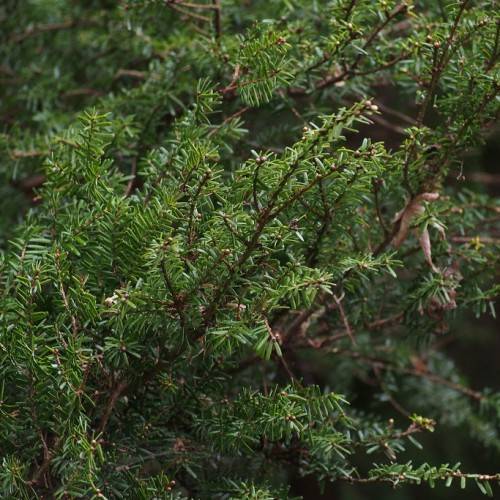
Japanese hemlock
Tsuga diversifolia
Cycle:
Perennial
Watering:
Average
Hardiness Zone:
4 - 7
Flowers:
Flowers
Sun:
Part shade,full shade
Cones:
Yes
Leaf:
Yes
Growth Rate:
Low
Maintenance:
Low
Poisonous To Humans:
Yes
Poisonous To Pets:
Yes
Drought Tolerant:
Yes
Salt Tolerant:
Yes
Invasive:
Yes
Care Level:
Medium
watering
Japanese hemlock needs to be watered regularly, but the amount and frequency of watering can vary depending on the season. In general, it should be watered around once or twice weekly, making sure to thoroughly soak the soil. During the summer, you may need to water more frequently during periods of hot and dry weather. In the winter, water less often as the soil will hold moisture for longer. Additionally, you should take into account the environment in which the plant is located; if it is planted in a location that receives a lot of sun, you may need to water more frequently.
sunlight
Japanese hemlock thrives in a location with partial sun to full sun. It is best for this plant species to receive 4 to 6 hours of direct sunlight daily. If receiving more sun than this, the Japanese hemlock may become stressed and burn. On the other hand, if not receiving enough direct sunlight, the growth of this hemlock species will be less vigorous than it could be. Therefore, it is best to choose an area that receives at least 4 to 6 hours of direct sun per day for this plant species.
pruning
Japanese hemlock (Tsuga diversifolia) should be pruned after the spring growth is complete and before the new growth begins in summer. Pruning should be done to remove dead, diseased, and broken branches, as well as crossing, rubbing, or weak branches. This will improve the overall shape and maintain the desired size and form of the plant. It is best to prune shallowly each year to remove a small amount of growth - don't prune any more than 1-third of the tree in a single year. Pruning in early spring will help to avoid the spread of disease.
